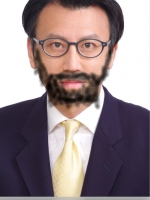Copyright is most commonly associated with the protection of books, songs, films and other forms of entertainment, but this is far from the full range of works it may cover. The audiovisual elements of a computer’s graphical user interface (GUI), now an integral element to modern computing, are also subject to copyright. A dispute over the ownership of one of the first invented GUIs would form the core of one of the most formative copyright infringement lawsuits in the tech sector.
著作權常與書籍、歌曲、電影及其他娛樂型態相關,但其常與所涵蓋全部範圍之著作大相逕庭。電腦使用者介面之視聽元素,作為現今當下計算不可缺之要素,而受到著作權保護。就作為首個使用者介面主張所有衍生之訴訟,在科技區塊裏形成最核心著作權侵害型態之一。
Microsoft, led by Bill Gates, was the first outside developer to receive a prototype of Apple’s Macintosh system ahead of its release in 1984 for the purposes of creating productivity software for the system. After its public unveiling, Gates petitioned Apple to license the Macintosh software to outside developers to create a new standard in personal computing. This proposal was rejected by Jean-Louis Gassée, who had become head of the Macintosh project after the ousting of Steve Jobs.
由Bill Gates帶領之微軟公司,係首個獲得蘋果麥金塔作業系統原型之外部研發者(早在1984年蘋果發表麥金塔作業系統前),其獲得之目的係為該系統研發有生產力之軟體。在公開發表後,Gates請求將麥金塔作業系統授權給外部研發人員,藉以在個人計算機創造一個新的標準。但這個請求被Jean-Louis Gassée拒絕,Jean-Louis Gassée在Steve Jobs被攆走時成為麥金塔計畫之領頭羊。
In 1985, Microsoft released its Windows 1.0 operating system, which shared many similarities with the Macintosh. Though Apple initially threatened to sue, the companies were able to come to an agreement wherein Apple licensed Macintosh design elements to Microsoft for use in Windows. In December 1987, when Windows 2.0 was released – containing even more design elements derived from the Macintosh GUI – Apple forwent threats of legal action and immediately filed suit against Microsoft for copyright infringement.
1985年,微軟發表視窗1.0作業系統,其與麥金塔作業系統有諸多相似之處。雖然一開始蘋果威脅要起訴,最終雙方達成合意,該合意內容提到了,蘋果將麥金塔設計元素授權給微軟之視窗1.0。1987年,當微軟發表視窗2.0作業系統,其囊括了更多源自於麥金塔使用者介面之設計元素,結果蘋果放棄以起訴作為威脅,直接對微軟提起侵害著作權之訴訟。
As the dispute played out, however, the wording of the 1985 license agreement regarding the Macintosh’s visual display elements worked against Apple’s case. The agreement was discovered to stipulate that “to use these derivative works in present and future software programs.” This specification of “future” programs – taken to include Windows 2.0 – eventually led to Apple being handed a loss in 1989 when Judge William Schwarzer found that 179 of the 189 visual display elements at issue in Apple’s copyright infringement suit were covered by the license agreement. The remaining 10, Schwarzer said, were not eligible for copyright protection due to the merger doctrine, which holds that ideas are not copyrightable. Apple’s attempts to appeal the decision were ended by the Supreme Court in 1995.
然而,如同爭議結束,兩公司於1985年關於麥金塔視覺展示元素授權契約之內文對蘋果之訟案不利,該契約被發現有著這樣一條的規範,即“可於現在乃至將來的軟體程式利用這些衍生著作”。“將來”程式這幾個字,包括視窗2.0。當 William Schwarzer法官認定蘋果提告侵權訴訟中,系爭189個視覺展示元素裏的179個,涵蓋於當初授權契約;剩下來的10個,基於思想與表達合併原則,法官認為思想(點子)不受著作權保護。最終導致蘋果於1989年獲敗訴判決,其上訴至聯邦最高法院,於1995年敗訴確定。
The loss was devastating for Apple and a landmark for the computing industry. Though the return of Steve Jobs helped to stabilise the company and eventually grow it into a giant, Apple and Macintosh’s survival remained on a knife edge throughout the mid-to-late 1990s, during which the victorious Microsoft and its Windows operating system became dominant in personal computing. The tech scene would likely not exist the way it does today without the influence of this copyright dispute.
該敗訴成為電腦業之指標,同時蹂躪蘋果。雖然Steve Jobs的回歸幫助蘋果穩定,蘋果與麥金塔從剃刀邊緣存活至1990年代中後期,最終使蘋果成為科技業之巨擘,此間勝利的微軟及其視窗作業系統成為個人電腦的主宰。沒有這個著作權侵權爭議之影響,科技業將不可能以現今這種方式存在。
上傳的英文文章,中文部分都是筆者利用閒暇時間所為,請體諒筆者的之辛勞。
請尊重著作權,勿違法利用。
